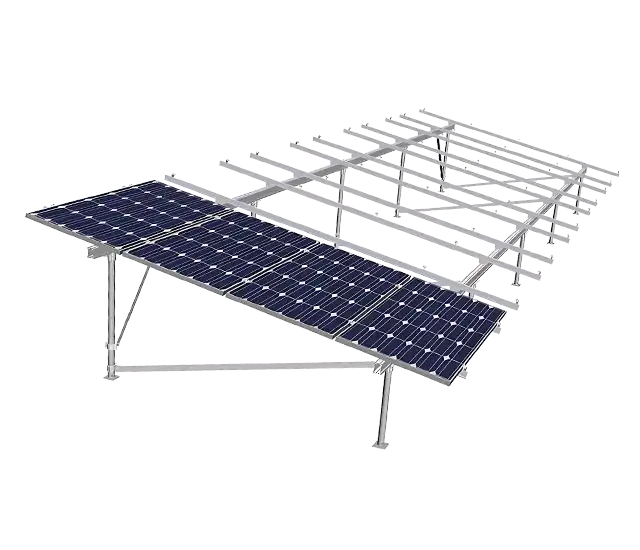Behind the Steel Framework: Investigating C Channel Manufacturers
Imagine standing under a soaring steel construction project, its grid-like frame the backbone of building projects ranging from office skyscrapers to bridges. Though little attention is usually paid to the unsung people behind these achievements of engineering brilliance, it is easy to wonder at its scope and strength. Now enter the realm of C channel makers, the artists and inventors in charge of forming these basic parts of contemporary building.
Though their function in building is nothing less than amazing, C channels—often known as structural channels—se pear as basic lengths of steel. These steel sections, which combine durability and adaptability, constitute the basis for industrial equipment, machinery, and buildings both alike. How then do producers make them? What difficulties do they run against? And why ought it to be relevant to you? Let’s untangle the narrative of C channel producers using knowledge and actual case studies that might unexpectedly surprise you.

What are C channels and why should they matter?
From the side, C channels look like the letter “C,” defined by their flat back and two flanges running perpendicularly. Construction, industry, and even automobile uses abound for them. See them as the skeleton of structures offering stability, support, and strength.
Among the main use are supporting walls or flooring in structures and vehicle and industrial frames. Trackers for sliding doors or conveyors; railings and guardrails. Their sturdy yet lightweight construction gives them great adaptability and makes working with them simpler than with more heavy steel beams.
You might now think, “Why does a basic C channel need such specialized manufacture?” The solution is found in accuracy. The size and quality must be perfect whether the channel supports a bridge deck or the roof of an industrial facility. A small flaw might lead to structural collapse or safety issues. That’s where makers of C channels excel.
How C Channel Manufacturers Create the Magical Change
Every perfectly cut channel is the result of a painstaking procedure combining modern technology, professional knowledge, and a constant quality focus behind it. This is how it operates.
- Specifications and Design: The process begins with knowing the needs of the customer. Manufacturers customize their designs to match the application whether it comes to a particular length, thickness, or coating for rust prevention. Modern simulation programs guarantee that the design satisfies safety and functional criteria.For instance, the steel will be coated to withstand the salted, corrosive climate if a company is making channels for seaside homes.
- Raw Materials Choice: Depending on its intended function, most C channels are constructed of carbon steel, stainless steel, or aluminum. Excellent raw materials are obtained to guarantee lifetime. While builders use stainless steel to fight corrosion, manufacturers of car parts generally pick lightweight aluminum.
- Hot rolling and forming: Among the main industrial techniques is hot rolling. It operates as follows: Steel slabs are heated till soft to temperatures beyond 1,000 degrees Fahrenheit. After that, these slabs are shaped into the recognizable C form by use of a sequence of rollers. Precision machineries guarantee, down to the last millimeter, that the measurements satisfy consumer requirements. Manufacturers sometimes employ cold forming methods for unique designs or smaller volumes. These room-temperature curved channels provide outstanding accuracy without requiring expensive heating furnaces.
- Surface Treatment : Most channels are coated with powder coating (for a sleek, polished finish) or galvanizing (a zinc coating for rust resistance), hence improving longevity. Extending the lifetime of channels subjected to demanding conditions depends on this stage.
- Quality Control: Rigid testing comes last, and maybe the most important action. Manufacturers find internal flaws or concealed cracks by means of ultrasonic and X-ray testing. Some even conduct load tests to guarantee the channel can manage the stress it is meant for.
The Global Reach of C Channel Manufacturers
Globally, C channel manufacturers inspire building and creativity. These are only a handful of the sectors where their contributions really show.
1: Infrastructure Development: From Indian railway bridges to New York skyscrapers, C channels are absolutely essential in major building projects. Companies like ArcelorMittal in Europe and Jindal Steel in India cooperate with infrastructure companies to guarantee every beam and channel is both robust and reasonably priced.
- Machinery and Automotive: For vehicle frames, the automotive sector mostly depends on lightweight yet strong channels. The industrial sector makes use of them meanwhile for assembly lines, elevators, and conveyor systems. Their perfect fit for various uses is their capacity to resist strong vibrations.
- Projects on Renewable Energy: C channels are common in solar panel mounting systems and wind turbine constructions. Reflecting a dedication to sustainability, manufacturers are now creating channels fit for environmentally friendly building products. Consider a recent Texas project where solar farms supported by hot-dip galvanized C channels It follows: Designed to last decades, a renewable energy system braves the sun and the sporadic storm.
Difficulties C Channel Manufacturers Face
- Every sector has challenges; C channel manufacturing is not an exception.
- Rising raw material costs of steel and aluminum affect pricing and profit margins.
- Strict rules on emissions and waste disposal mean that meeting cost- competitiveness calls for creativity.
- Smaller enterprises find it difficult to adapt to better automation technologies since they demand upskilling people and investing in new technology.
- The sector keeps developing in spite of these obstacles. Experts project the market for C channels could surpass $16 billion by 2030 given rising global infrastructure investments.
Selecting Appropriate Manufacturer for C channels
If you are looking for C channels, knowing what to search for in a manufacturer will save you time and effort. This list should help you decide.
- To guarantee dependability and quality, look at case studies and internet evaluations.
- Customizing Options: Can the producer meet your particular design needs?
- Search for globally accepted criteria such as ISO 9001 to ensure quality.
- Manufacturers presenting environmentally sustainable choices show accountability and thoughtfulness.
- Companies with a competent support staff can handle any problems or inquiries you could have.
End Notes: Although they operate behind the scenes, C channel manufacturers clearly show their influence in every steel-framed structure, bridge, and equipment now in use. They provide the backbone of industry, invention, and progress, not only bits of steel.
